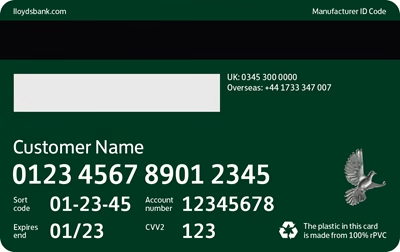Sometimes you need more than just a standard bank transfer: making security deposits, sending money to loved ones overseas, or paying a vendor for supplies.
You need a method that’s fast, secure, and won’t bounce. Wire transfers deliver exactly that, whether you wish to send funds domestically or abroad.
However, if you’ve never completed one before, we’ll walk you through the terminology, timing, and requirements step by step. First, What Exactly Is a Wire Transfer?
Think of a wire transfer like an express delivery for your money. You’re not mailing a check and waiting for a payment to “process” over days.
You’re telling your bank to move a specific amount to someone else’s account— Once submitted, the bank sends the money electronically through a secure network (Fedwire or SWIFT), and the funds land into the recipient’s account within hours or by the end of the same business day for domestic transfers. International transfers may take one to two business days to process. Unlike apps like Zelle or Venmo, wire transfers work between banks—even across borders—and aren’t limited by app ecosystems.
What You’ll Need Before You Start
Wire transfers are precise. One missing digit, and the money might bounce—or worse, land in the wrong account. So before you begin, double-check these details:
For Domestic Transfers:
- Full name of the person or business receiving the money
- Their bank account number
- Routing number (9-digit number specific to their bank)
- Bank name and address (some banks request this)
- Amount you’re sending
- Optional: transfer notes or payment reference
Tip: Double-check all details, as once the transaction is settled, it is nearly impossible to recall, so accuracy is of paramount importance.
For International Transfers:
Along with the above, you’ll also need:
- SWIFT or BIC code (for the recipient’s bank)
- Currency you’re sending (USD, EUR, etc.)
- Recipient’s address (yes, sometimes even their ZIP code)
Tip: If you’re unsure about a SWIFT code or routing number, ask the recipient to confirm it with their bank directly. Guesswork can delay or derail a transfer.
How to Actually Send a Wire Transfer (Step-by-Step)
Most banks offer three ways to send a wire transfer:
- Online banking
- Mobile app
- In-person at a bank branch
Here’s how the process usually goes:
Step 1: Step 1: Chose Your Channel & Start the Wire Process
Log into your bank account (or head to the branch) and look for the “Send a Wire Transfer” or similar option.
Step 2: Enter the Recipient’s Info
Be extra careful when entering details. Double-check spelling, account numbers, and routing/SWIFT codes. Many banks don’t let you edit the transfer once it’s submitted.
Step 3: Review the Fees and Limits
Wire transfers aren’t free.
- Domestic wires: usually cost $15–$30
- International wires: often range from $30–$50, plus a currency conversion fee
There may also be a daily limit for online transfers. If you’re sending a large amount, it’s best to confirm with your bank ahead of time. Inquire about intermediary or correspondent bank fees that may reduce the recipient’s net amount.
Step 4: Submit and Save Your Confirmation
Once everything looks right, submit the transfer. Most banks will give you a reference number—save it. You can use it to track the status of your transaction. It can also serve as evidence in case of a dispute. Still feel a little unsure? Here’s a simple, walk-you-through-it article on how do you do a wire transfer. Worth a look before you click “send.”
How Long Does It Take?
It depends on where you’re sending the money—and when.
- Domestic wires: often arrive the same day if sent before the bank’s cut-off time (usually 2–3 PM local time).
- International wires: typically 1–2 business days. Sometimes longer if the receiving bank is in a different time zone.
Banks don’t process wires on weekends or holidays, so plan accordingly.
Can You Cancel a Wire Transfer?
It’s possible—but only if the transfer hasn’t been completed yet. Once the money is out, getting it back becomes extremely difficult.
That’s why attention to detail matters so much with wire transfers.
If you realize there’s a mistake, contact your bank immediately and reference your confirmation number. Time is your best chance at stopping an error.
Receiving a Wire Transfer? Here’s What You Need
If you’re on the receiving end, the process is easier. Just give the sender:
- Your full name (as it appears on your account)
- Your bank’s name
- Your bank account number and routing number
- Your address (sometimes required)
- For international transfers, your bank’s SWIFT code
Once the funds are sent, they should show up in your account within 1–2 business days (domestic) or a bit longer (international).
Quick Tips Before You Wire
- Know your bank’s cut-off time. Transfers after-hours get processed the next business day.
- Save a copy of everything. Screenshots, email confirmations, reference numbers—keep it all.
- Use two-factor authentication if you’re transferring online. Extra protection is always a win.
- Never wire money to someone you don’t know well. Wire transfers are hard to trace or reverse. Scammers love them for that reason.
Wrapping Up
Wire transfers may not be part of your everyday banking, but when you need to move a large sum or make a time-sensitive payment, they offer unmatched speed and reliability.
By understanding their workings and preparing accurate details in advance, you can avoid delays, reduce fees, and ensure your funds reach the correct account.







